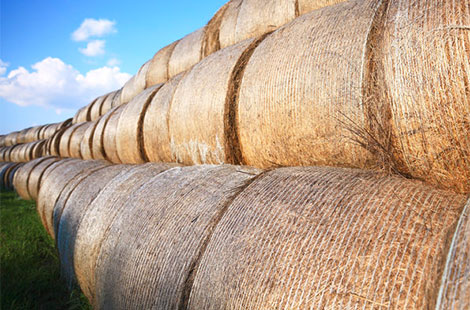Grain prices down—hay prices up
Drought and declining acreage point to higher hay costs.
September 15, 2018

Estimated record yields for both corn and soybeans are adding price support to calves and feeder cattle, while drought in some parts of the country is making hay extra expensive.
Corn production this year is forecast at 14.8 billion bushels, 2% more than last year, according to the monthly Crop Production report. Based on conditions as of Sept. 1, yields are expected to average a record-high 181.3 bushels per acre, which would be 4.7 bushels more than last year.
With supply rising more than use, the World Agricultural Supply and Demand Estimates (WASDE) increased corn ending stocks 90 million bushels from the previous month. WASDE projects the season-average corn price received by producers 10¢ cents lower, with a midpoint of $3.50 per bushel.
Likewise, soybean yields are estimated at a record-high 52.8 bushels per acre—3.7 bushels more than last year—for record-large production of 4.69 billion bushels. The 2018-19 U.S. season-average soybean price is forecast at $7.35 to $9.85 per bushel.
LISTEN: Cattle Market Weekly Audio for Sept. 15, 2018
The latest WASDE lowered soybean meal prices $5 at the midpoint to $290 to $330 per short ton. Soybean oil prices are projected at 28 cents to 32 cents per pound.
Hay price outlook unfriendly
The outlook for hay prices is less friendly, courtesy of this year’s drought, as well as declining acreage over time.
According to Scott Brown, Extension livestock economist with the University of Missouri, just over 55 million acres of hay is expected to be harvested this year, which would be 10.4% below the 61.4-million-acre average of 2000 to 2010.
“U.S. hay prices have been at least 10% above year-ago levels for every month of 2018 thus far,” Brown says in a recent BEEF article. “Price increases have been even steeper in Kansas (+43.7% year to date), Nebraska (+26.6%) and South Dakota (+16.5%).”
Moreover, Brown says higher prices could hang around for a while, especially in some parts of the country.
“With calf prices projected to remain under pressure through 2020 due to rising beef production, profit margins will likely become even tighter in the years to come,” Brown says.
About the Author(s)
You May Also Like




.png?width=300&auto=webp&quality=80&disable=upscale)
